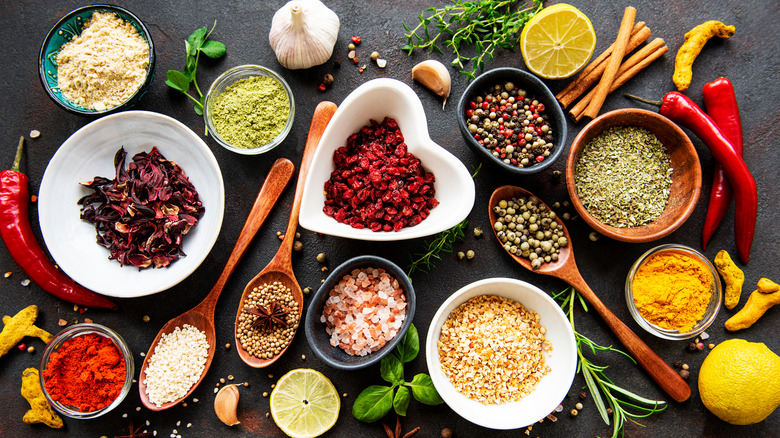The Simple Seasoning Mistake You're Probably Making
No matter what you're making, adding seasoning is a crucial step in the cooking process. Apple pie without cinnamon or marinara sauce without basil just isn't the same. But contrary to popular belief, the point of seasoning your food isn't just to add flavor to a dish.
According to Watergate Bay, the seasoning is what connects the ingredients and turns them into a cohesive meal. Take shepherd's pie, for example. Even though it gets its flavor from many components, including potatoes, ground meat, peas, and carrots, it's the rosemary, thyme, salt, and pepper that make the dish taste complete.
And to maximize the flavor of your seasoning, there are right and a wrong ways to go about adding it to a dish. According to Cuisine Noir, it doesn't just come down to over-seasoning or under-seasoning. The point in the cooking process when you add the seasoning makes a difference, too.
Seasoning once isn't enough
It's never a good idea to pile the seasoning on all at once. Instead, as Cuisine Noir explains, it's better to season as you cook, so you end up with layers of flavor in every bite. (This also prevents you from adding too much or too little seasoning.)
Salt, for example, is best added in stages because it works over time, Epicurious shares. If you just sprinkle it on at the end, you're only adding saltiness to your dish. But if you add it little by little as you cook, it mingles with the other ingredients, activating its flavor-enhancing properties.
The same applies to spices. Much of the flavor in spices comes from the oils contained within them, Mind Body Green explains. These flavor-packed oils are released with heat, so if you layer your food with spices as you cook, the flavor is equally distributed among each ingredient.
Taste your food as you go
Seasoning your food throughout the cooking process is key, but it's also an easy way to go overboard with the seasoning. You don't want to end up with a dish that's overly spicy or salty, or even one that just has an overpowering amount of a single flavor.
The easiest way to prevent this, per The Spruce Eats, is simply to keep tasting your food. It also helps to measure out all of your seasoning before you add it, then divide it in half. Add the first half in the beginning, and sprinkle on the second half little by little as you cook.
For ground spices, specifically, the best way to go about this is to do so during the last part of the cooking process, Spice Advice says. If you add them towards the beginning, they lose their potency, and when that happens, you'll likely end up adding more than you need. But no matter what seasoning you're working with, tasting as you layer it on will help you achieve the most flavorful food.


